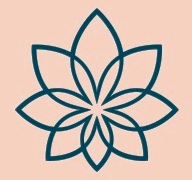MASKS and COVID-19
COVID Prevention: It’s Still the Simple Things That Work. More about Face Coverings and Masks
1. Wash your hands
2. Physical Distance
3. Wear a mask
More About Masks
Can face masks help prevent the spread of the coronavirus that causes COVID-19? Yes, face masks combined with other preventive measures, such as frequent hand-washing and social distancing, help slow the spread of the virus. Masks protect you and those around you, as well as the community at large.
So why weren't face masks recommended at the start of the pandemic? At that time, experts didn't yet know the extent to which people with COVID-19 could spread the virus before symptoms appeared. Nor was it known that some people have COVID-19 but don't have any symptoms. Both groups can unknowingly spread the virus to others.
These discoveries led the U.S. Centers for Disease Control and Prevention (CDC) to do an about-face on face masks. The CDC updated its guidance to recommend widespread use of simple cloth face coverings to prevent transmission. As of today, there is now a requirement in Texas to wear a mask.
How much do masks help? The latest forecast from the Institute of Health Metrics and Evaluation suggests that 33,000 deaths could be avoided by October 1 if 95 percent of people wore masks in public.
How do the different types of masks work?
Surgical masks
Also called a medical mask, a surgical mask is a loose-fitting disposable mask that protects the wearer's nose and mouth from contact with droplets, splashes and sprays that may contain germs. A surgical mask also filters out large particles in the air. Surgical masks may protect others by reducing exposure to the saliva and respiratory secretions of the mask wearer.
At this time, the U.S. Food and Drug Administration has not approved any type of surgical mask specifically for protection against the coronavirus.
N95 masks
An N95 mask is a type of respirator, offers more protection than a surgical mask does because it can filter out both large and small particles. As the name indicates, the mask is designed to block 95% of very small particles.
Health care providers must be trained and pass a fit test to confirm a proper seal before using an N95 respirator in the workplace. Like surgical masks, N95 masks are intended to be disposable. However, researchers are testing ways to disinfect N95 masks so they can be reused.
Some N95 masks, and even some cloth masks, have one-way valves that make them easier to breathe through. But because the valve releases unfiltered air when the wearer breathes out, this type of mask doesn't prevent the wearer from spreading the virus. For this reason, some places have banned them.
Cloth masks
While surgical and N95 masks are in short supply and must be reserved for health care providers, cloth masks are easy to find and can be washed and reused.
The majority of people (excluding young children, people with certain respiratory conditions that make wearing a mask very difficult to breath, or those with psychiatric conditions prohibiting use) should wear cloth masks can help reduce the spread of the coronavirus.
Cloth masks are cheap and simple to make. Instructions are easy to find online. Masks can be made from common materials, such as sheets made of tightly woven cotton. The CDC website even includes directions for no-sew masks made from bandannas and T-shirts. Cloth masks should include multiple layers of fabric. There are now many options online for purchase if you prefer not to make your own. There are generally two ways of attaching them to the face, either via ear loops or bands that go around the head.
Two compelling case reports also suggest that masks can prevent transmission in high-risk scenarios. In one case, a man flew from China to Toronto and subsequently tested positive for COVID-19. He had a dry cough and wore a mask on the flight, and all 25 people closest to him on the flight tested negative for COVID-19. In another case, in late May, two hair stylists in Missouri had close contact with 140 clients while sick with COVID-19. Everyone wore a mask and none of the clients tested positive.
How to use a face mask
Facemasks should be worn in all public places, even outdoors where you will be around others.
Here are a few pointers for putting on and taking off a cloth mask:
· Place your mask over your mouth and nose.
· Tie it behind your head or use ear loops and make sure it's snug.
· Don't touch your mask while wearing it.
· If you accidentally touch your mask, wash or sanitize your hands.
· Remove the mask by untying it or lifting off the ear loops without touching the front of the mask or your face.
· Wash your hands immediately after removing your mask.
· Regularly wash your mask with soap and water in the washing machine. It's fine to launder it with other clothes.
Finally, here are a few face mask precautions:
· Don't put masks on anyone who has trouble breathing, or is unconscious or otherwise unable to remove the mask without help.
· Don't put masks on children under 2 years of age.
· Don't use face masks as a substitute for social distancing.
